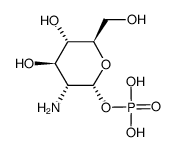PknB-Mediated Phosphorylation of a Novel Substrate, N-Acetylglucosamine-1-Phosphate Uridyltransferase, Modulates Its Acetyltransferase Activity
Amit Parikh, Sunil Kumar Verma, Shazia Khan, Balaji Prakash, Vinay Kumar Nandicoori, Amit Parikh, Sunil Kumar Verma, Shazia Khan, Balaji Prakash, Vinay Kumar Nandicoori, Amit Parikh, Sunil Kumar Verma, Shazia Khan, Balaji Prakash, Vinay Kumar Nandicoori
Index: J. Mol. Biol. 386(2) , 451-64, (2009)
Full Text: HTML
Abstract
Identifying direct targets of kinases and determining how their activities are regulated are central to understanding how they generate biological responses. Genetic and biochemical studies have shown that Mycobacterium tuberculosis serine/threonine protein kinases PknA and PknB play a role in modulating cell shape and possibly cell division. In this report, we show that the enzyme N-acetylglucosamine-1-phosphate uridyltransferase (GlmU) of M. tuberculosis is a novel substrate of PknB and is phosphorylated on threonine residues. GlmU carries out two important biochemical activities: a C-terminal domain catalyzes the transfer of acetyl group from acetyl coenzyme A to glucosamine-1-phosphate to produce N-acetylglucosamine-1-phosphate, which is converted into UDP-N-acetylglucosamine by the transfer of uridine 5’-monophosphate (from uridine 5′-triphosphate), a reaction catalyzed by the N-terminal domain. We determined the crystal structures of GlmU in apo form and UDP-N-acetylglucosamine-bound form, and analyzed them to identify threonine residues that may be accessible to PknB. The structure shows a two-domain architecture, with an N-terminal domain having an α/β-like fold and with a C-terminal domain that forms a left-handed parallel β-helix structure. Kinase assays with PknB using the N- and C-terminal domains of GlmU as substrates illustrated that PknB phosphorylates GlmU in the C-terminal domain. Furthermore, mutational studies reveal one of the five threonines present in region 414–439 to be phosphorylated by PknB. Structural and biochemical analyses have shown the significance of a variable C-terminal tail in regulating acetyltransferase activity. Notably, we demonstrate that although PknB-mediated phosphorylation of GlmU does not affect its uridyltransferase activity, it significantly modulates the acetyltransferase activity. These findings imply a role for PknB in regulating peptidoglycan synthesis by modulating the acetyltransferase activity of GlmU.
Related Compounds
| Structure | Name/CAS No. | Molecular Formula | Articles |
|---|---|---|---|
 |
ALPHA-D-GLUCOSAMINE 1-PHOSPHATE
CAS:2152-75-2 |
C6H14NO8P |
|
Characterization of the essential gene glmM encoding phospho...
1996-01-05 [J. Biol. Chem. 271(1) , 32-9, (1996)] |
|
A new family of glucose-1-phosphate/glucosamine-1-phosphate ...
2005-02-16 [J. Am. Chem. Soc. 127(6) , 1711-8, (2005)] |
|
[An unusual lipid A from a marine bacterium Chryseobacterium...
2006-01-01 [Bioorg. Khim. 32(5) , 538-45, (2006)] |
|
Fatty acyl derivatives of glucosamine 1-phosphate in Escheri...
1983-06-25 [J. Biol. Chem. 258(12) , 7379-85, (1983)] |
|
HPLC analysis of hexosamine phosphates in biological samples...
1992-12-01 [J. Biochem. Biophys. Methods 25(4) , 237-44, (1992)] |